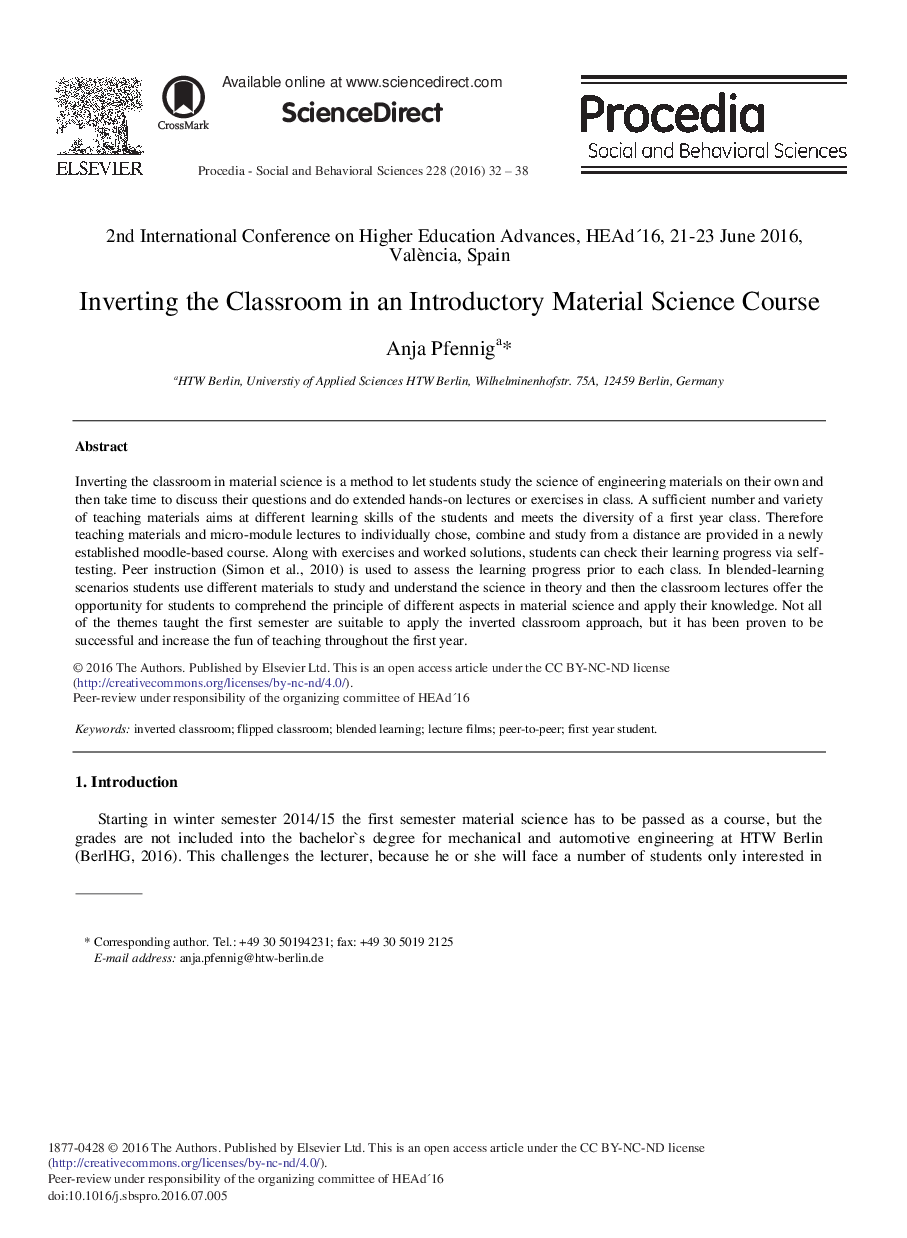| Article ID | Journal | Published Year | Pages | File Type |
|---|---|---|---|---|
| 1107115 | Procedia - Social and Behavioral Sciences | 2016 | 7 Pages |
Inverting the classroom in material science is a method to let students study the science of engineering materials on their own and then take time to discuss their questions and do extended hands-on lectures or exercises in class. A sufficient number and variety of teaching materials aims at different learning skills of the students and meets the diversity of a first year class. Therefore teaching materials and micro-module lectures to individually chose, combine and study from a distance are provided in a newly established moodle-based course. Along with exercises and worked solutions, students can check their learning progress via self-testing. Peer instruction (Simon et al., 2010) is used to assess the learning progress prior to each class. In blended-learning scenarios students use different materials to study and understand the science in theory and then the classroom lectures offer the opportunity for students to comprehend the principle of different aspects in material science and apply their knowledge. Not all of the themes taught the first semester are suitable to apply the inverted classroom approach, but it has been proven to be successful and increase the fun of teaching throughout the first year.
